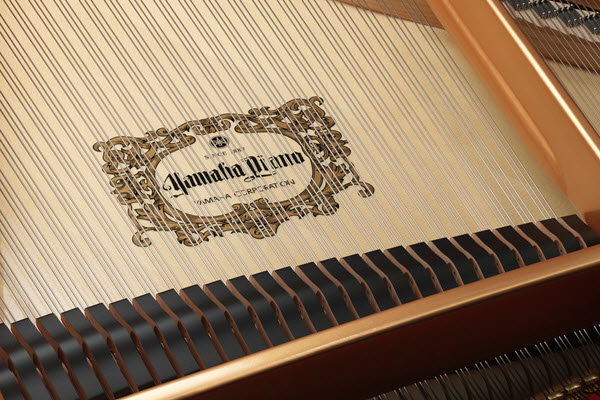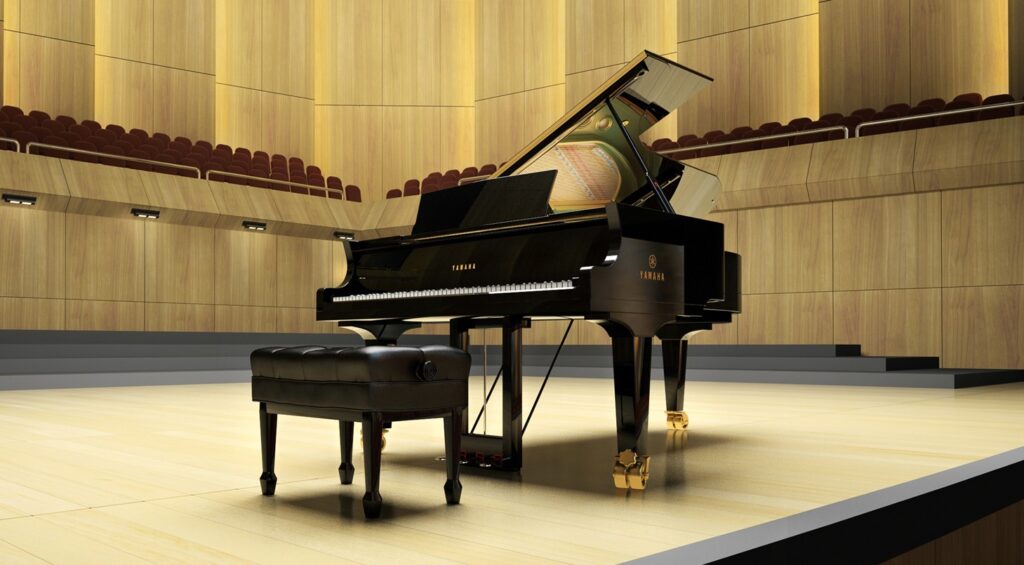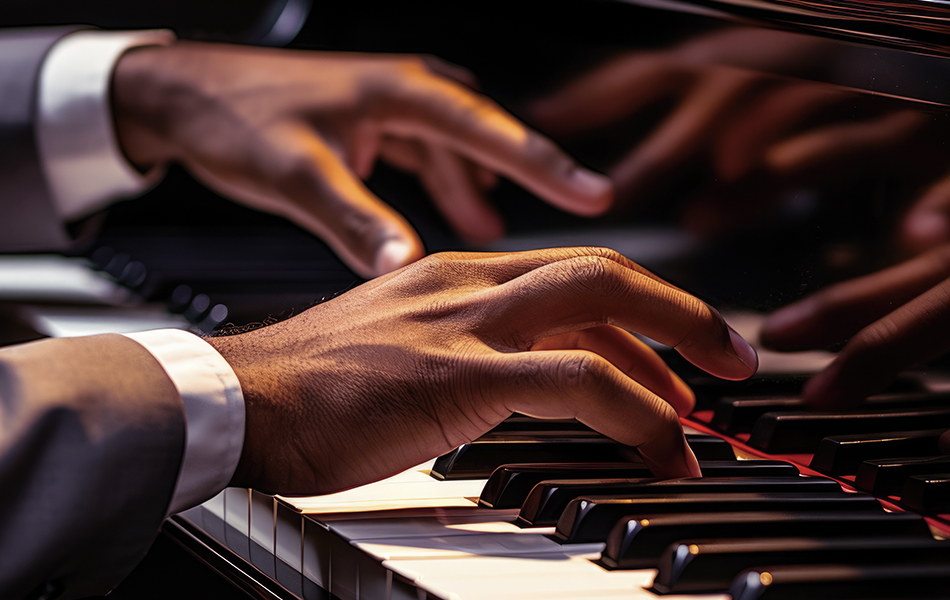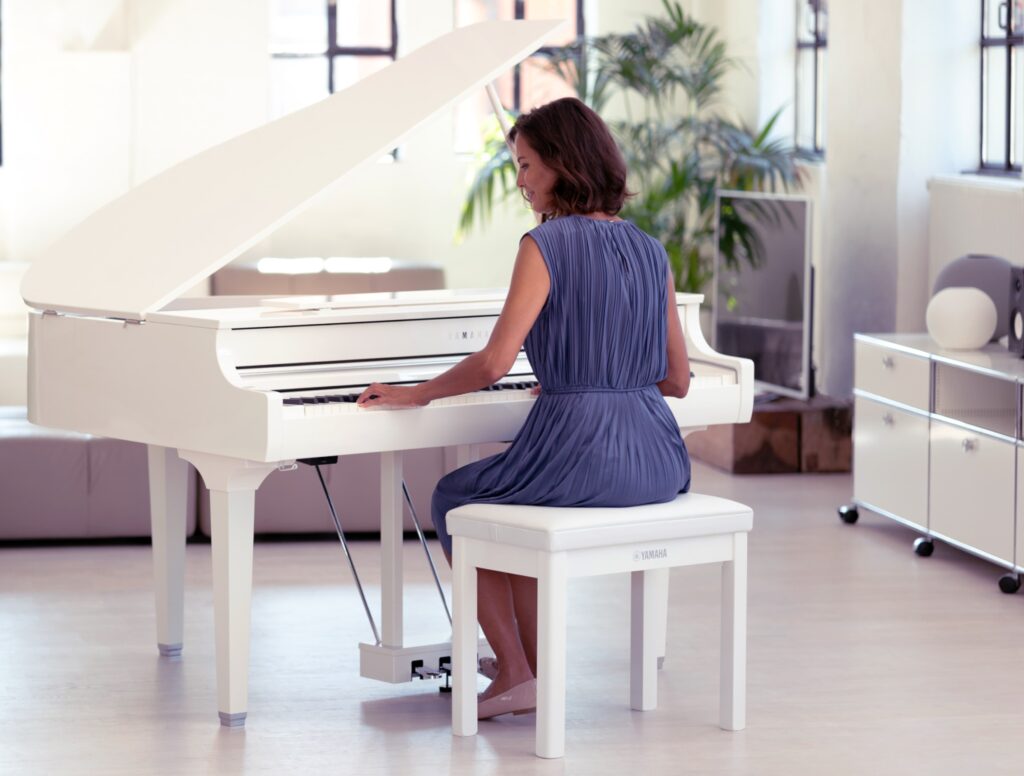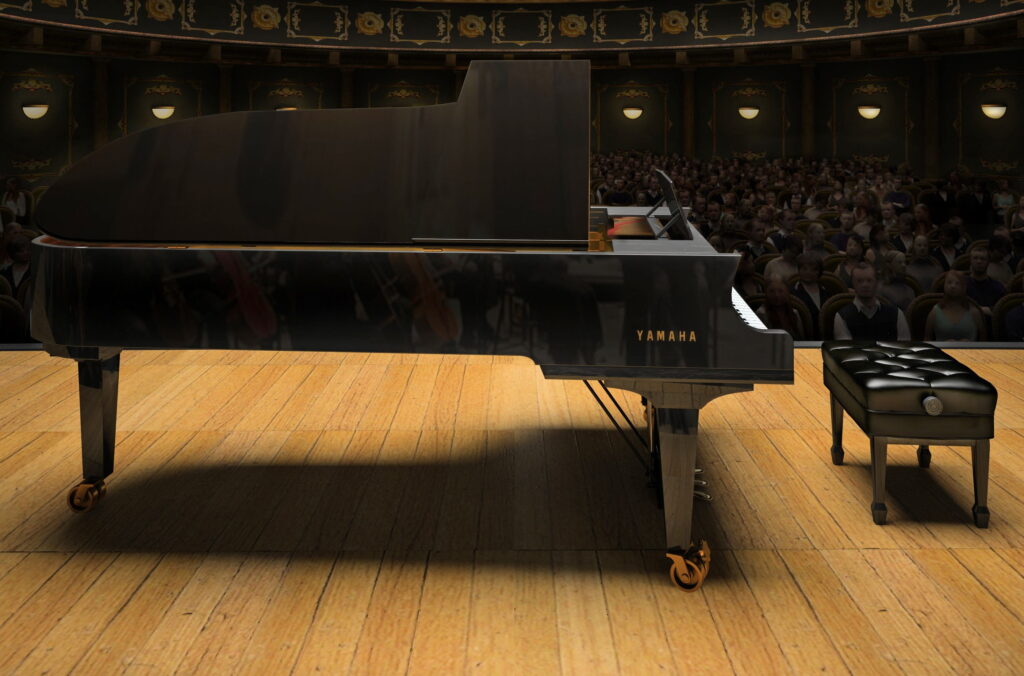What Is a TransAcoustic™ Piano?
An instrument that offers a unique combination of acoustic and digital sound.
Yamaha is not only a top manufacturer of acoustic pianos but also a leader in integrating technology into them. Some examples include the Disklavier, the Clavinova and the SILENT Piano™.
In 2015, Yamaha introduced the TransAcoustic™ Piano, a hybrid acoustic and digital instrument. “We’d been working on this technology for some time,” says Russ Hirota, Product Marketing Manager at Yamaha. “The piano version was the first TransAcoustic product to come to market. We later released the TransAcoustic guitar.”
In 2023, Yamaha debuted a line of third-generation TransAcoustic Pianos. Here’s a look at how these extraordinary instruments work, along with a description of their unique capabilities.
TransAcoustic Explained
The TransAcoustic Piano comes in various upright and grand models that differ in size and features. Yamaha describes them as “hybrid” because they offer several separate playing modes.
In Acoustic mode, you can play a TransAcoustic piano like any other Yamaha grand or upright piano. “It’s a pure acoustic instrument in every sense,” Hirota notes.
When you turn on the power and enter TransAcoustic mode, your sonic options multiply significantly. The piano strings get muted, and your keystrokes and pedal movements are converted to digital data. That data triggers a built-in tone module that offers a variety of sampled keyboard sounds, including grands, electric pianos, strings and more.
If you switch to Layer mode, the mutes come off the piano strings, and you can combine the acoustic and digital sounds.
The last option is Quiet mode. Here, you can listen to what you play on headphones without creating any sound in the room, allowing you to practice any time of the day or night.
Capturing Keystrokes
If you’re wondering how a TransAcoustic Piano converts your playing into digital audio in real time, it all starts with an array of sensors. “We use an articulation sensor underneath every key,” explains Hirota.
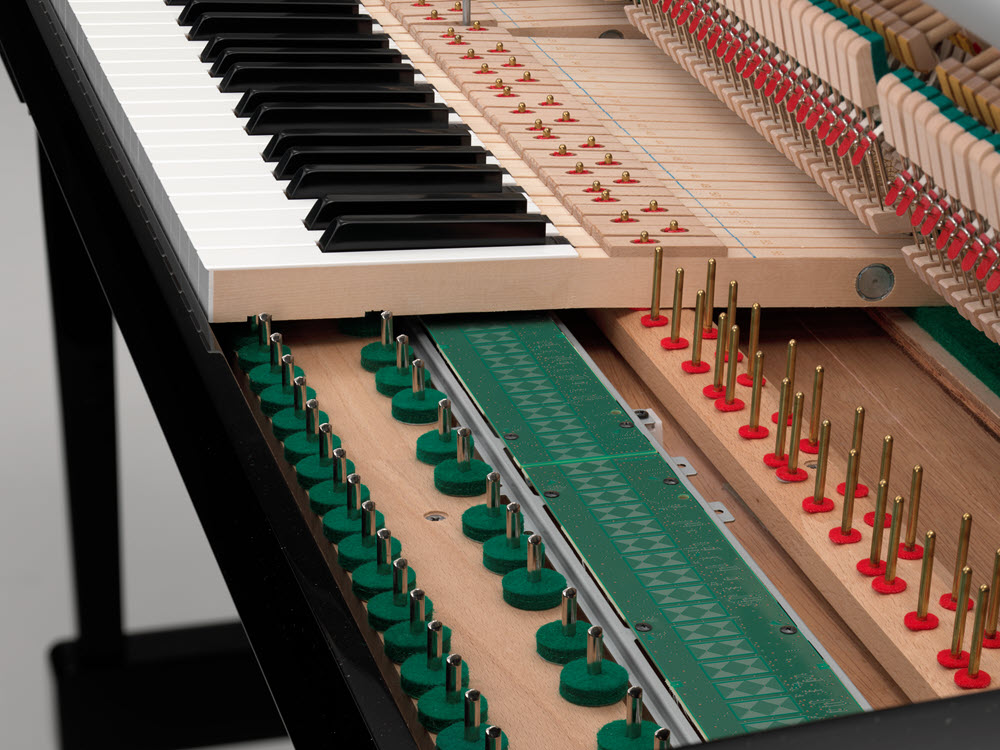
These sensors capture which keys are pressed and how hard, sending that information as data to the instrument’s built-in tone generator — a process that happens with no lag between pressing the key and hearing the note, so the playing feel is authentic.
Grand and baby grand TransAcoustic Piano models have a second set of sensors on their hammers, which measure the speed at which they hit the strings. The combined data from the hammer sensors and articulation sensors provides accuracy suitable for even the most demanding professional pianists. “The way we implement the technology allows us to blur the lines of ‘am I playing it acoustically or am I playing it digitally?’” says Hirota.
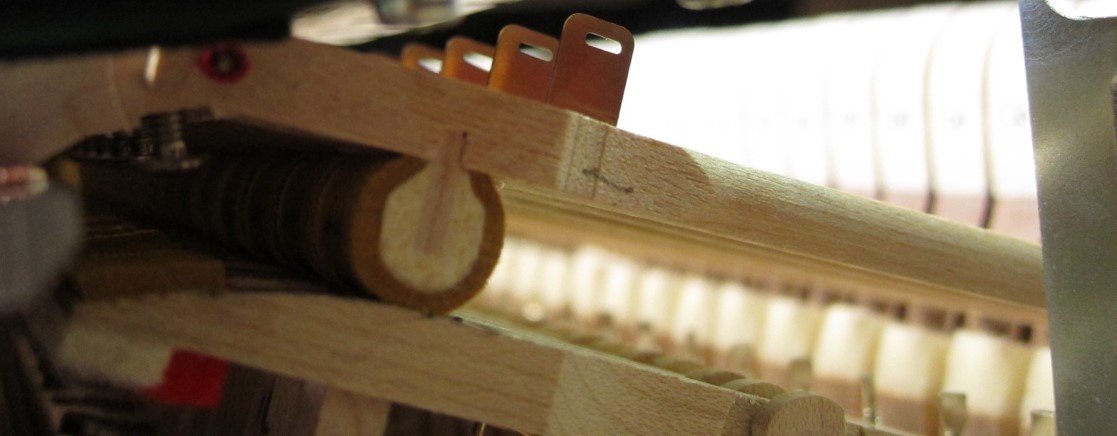
But even the upright models, which have articulation sensors on the keys but no hammer sensors, are remarkably accurate. The articulation sensors alone recognize a whopping 1024 velocity levels. (By comparison, a typical MIDI keyboard measures only 128 levels.) All TransAcoustic models also feature optical sensors in the pedals that can read up to 256 levels of pedaling.
Soundboard as Speaker
An essential way that TransAcoustic technology differs from say, a piano with sampled sounds and built-in speakers is that the amplified audio doesn’t go through a conventional loudspeaker, but it’s projected clearly into the room as if it did.
After the performance data gets sent from the sensors to the tone module, it triggers the selected digital instrument sound. That audio goes through an amplification stage and is then sent to a transducer, a device attached to the underside of the soundboard that looks like a speaker with no cone. As in a speaker, the transducer changes the audio into vibrations that, in turn, vibrate the wood in the soundboard. “TransAcoustic technology allows you to leverage the piano’s soundboard to amplify digital sounds naturally,” says Hirota. “The soundboard functions effectively as your speaker cone.”

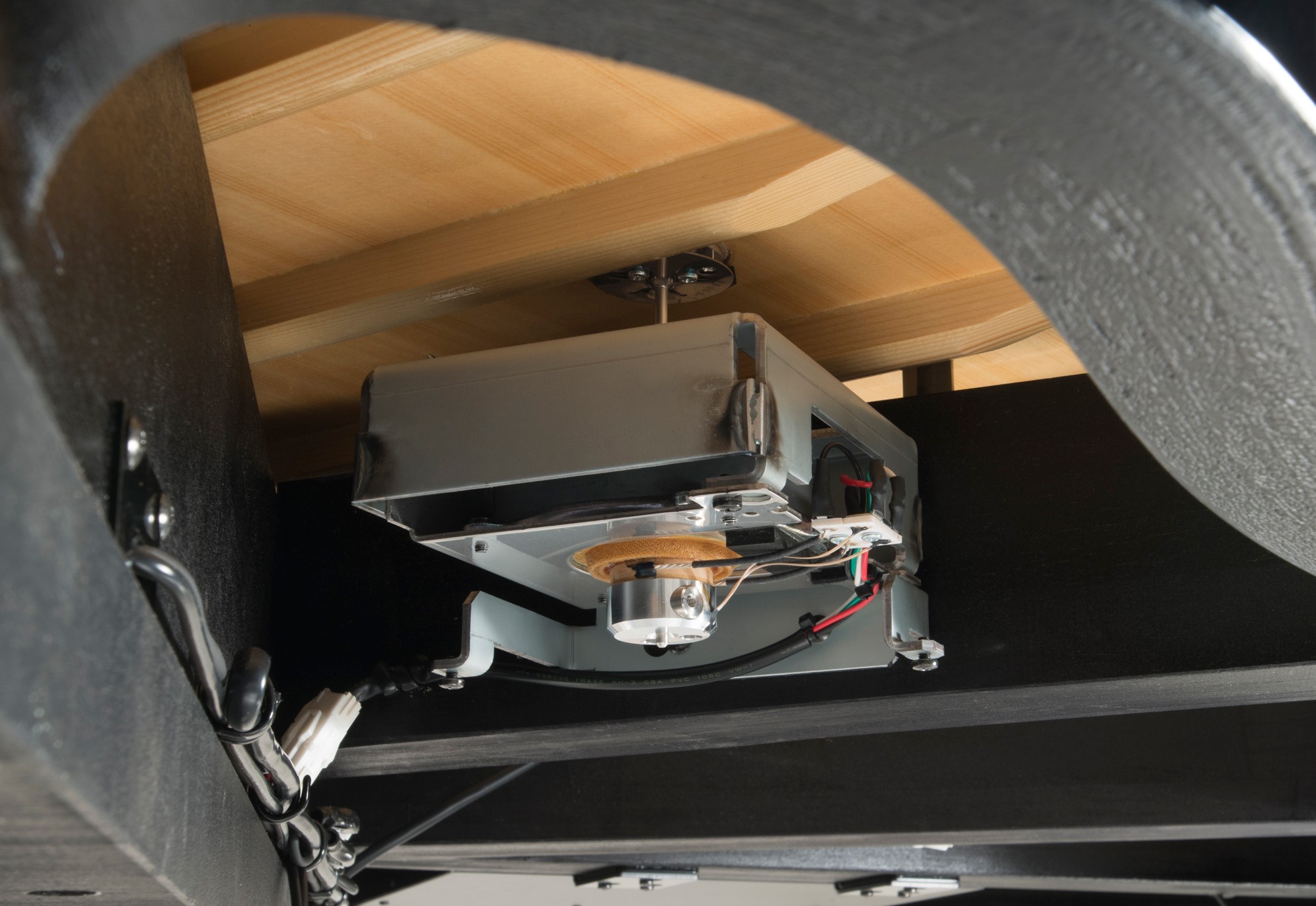
The Sounds
The pre-loaded tone module sounds include several sampled grand pianos, including Yamaha CFX, Bösendorfer, Pop and Ballad. You also get four historical piano sounds, including models of pianos used by Scarlatti, Mozart, Beethoven and Chopin.
TransAcoustic Pianos offer more than just acoustic piano sounds, however. There are also a wide variety of electric piano, organ (classical and jazz models), string, choir, synthesizer, harpsichords and vibraphone sounds, as well as layered voices like Piano and Strings, Piano and Pad, and Piano and DX electric piano.
Between the four distinct playing modes and this large selection of digital sounds, TransAcoustic Pianos offer far more sonic versatility than any conventional acoustic piano.
More Unique Features
The ability of the TransAcoustic system to convert your playing into digital data allows for many additional benefits. You can:
- Transpose the keyboard (when in TransAcoustic or Quiet mode).
- Switch to non-equal-temperament tunings to simulate those used on historical instruments. Available tunings are Pure Major, Pure Minor, Pythagorean, Mean-Tone, Werkmeister and Kirnberger. The latter two were used extensively during the time of Bach and Beethoven.
- Record your performances as either MIDI files or audio recordings and store them on an external flash drive connected to the USB to Device port.
- Connect to a computer using the USB to Host port and use the piano as an audio interface for recording your piano performances into a Digital Audio Workstation (DAW) such as Steinberg Cubase.
- Use the piano as a MIDI controller for triggering virtual instruments.
- Play audio through the TransAcoustic’s sound system from an external Bluetooth®-enabled device or the piano’s stereo 1/8-inch audio input jack.
- Output audio directly from your piano using the Aux Output jacks to connect to a PA system or other analog device.
- Connect via Bluetooth, USB or Wi-Fi to the Yamaha Smart Pianist app, which shows the score of preset songs as well as offering recording options and more.
The TransAcoustic Advantage
As you can see, a Yamaha TransAcoustic piano provides versatility not found in any other acoustic piano. “It brings together craftsmanship and innovation to give you a whole new way of experiencing the piano,” Hirota says. “You get all the richness you’d expect from a purely acoustic instrument but also the versatility of digital. You can explore and blend in different sounds, play in privacy with headphones or connect the piano to a smart device.”
Ready to learn more? Check out the video:










